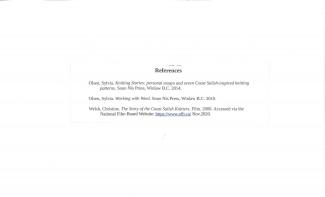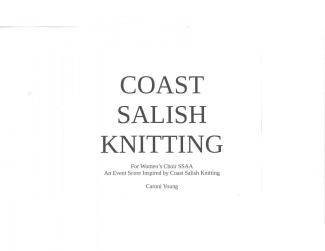
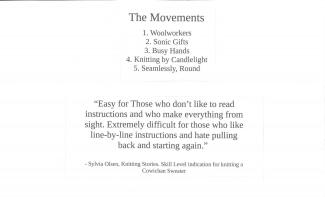
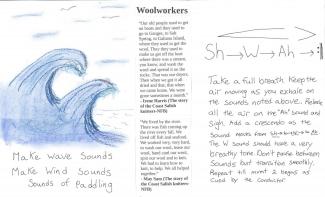
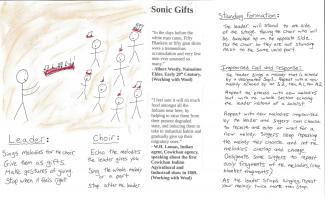
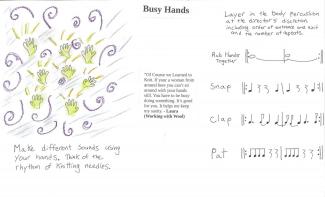
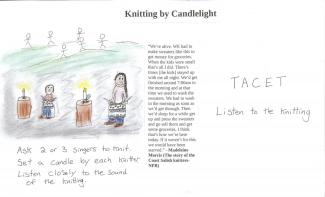
“We’re alive. WE had to
make sweaters like this
to get money for
groceries. When the kids
were small that’s all I did.
There’s times [the kids]
stayed up with me all
night. We’d get finished
around 7:00am in the
morning and at that time
we used to wash the
sweaters. We had to
wash in the morning as
soon as we’d get
through. Then we’d sleep
for a while get up and
press the sweaters and
go sell them and get
some groceries. I think
that’s how we’re here
today. If it weren’t for this
we would have been
starved.” - Madeleine
Morris (The story of the
Coast Salish knitters-
NFB)
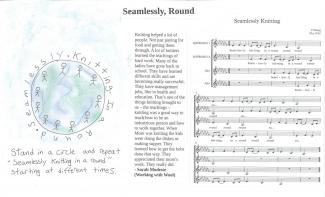
Knitting helped a lot of
people. Not just paying
for food and getting them
through. A lot of knitters
learned the teachings of
hard work. Many of the
ladies have gone back to
school. They have
learned different skills
and are becoming really
successful. They have
management jobs, like in
health and education.
That’s one of the things
knitting brought to us –
the teachings – knitting
was a good way to teach
how to be an industrious
person and how to work
together. When Mom
was knitting the kids
were doing the dishes or
making supper. They
learned how to get the
hobs done that way.
They appreciated their
mom’s work. They really
did.
- Sarah Modeste
(Working with Wool)
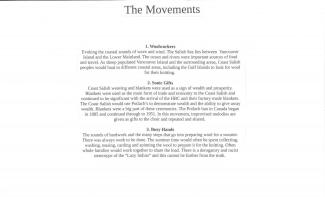
Evoking the coastal sounds of wave and wind. The Salish Sea lies between Vancouver Island and the Lower Mainland. The ocean and rivers were important sources of food and travel. As sheep populated Vancouver Island and the surrounding areas, Coast Salish peoples would boat to different coastal areas, including the Gulf Islands to look for wool for their knitting.
Coast Salish weaving and blankets were used as a sign of wealth and prosperity. Blankets were used as the main form of trade and economy to the Coast Salish and continued to be significant with the arrival of the HBC and their factory made blankets. The Coast Salish would use Potlach’s to demonstrate wealth and the ability to give away wealth. Blankets were a big part of these ceremonies. The Potlach ban in Canada began in 1885 and continued through to 1951. In this movement, improvised melodies are given as gifts to the choir and repeated and shared.
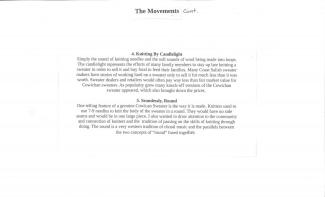
Simply the sound of knitting needles and the soft sounds of wool being made into loops. The candlelight represents the efforts of many family members to stay up late knitting a sweater in order to sell it and buy food to feed their families. Many Coast Salish sweater makers have stories of working hard on a sweater only to sell it for much less than it was worth. Sweater dealers and retailers would often pay way less than fair market value for Cowichan sweaters. As popularity grew many knock-off versions of the Cowichan sweater appeared, which also brought down the prices.
